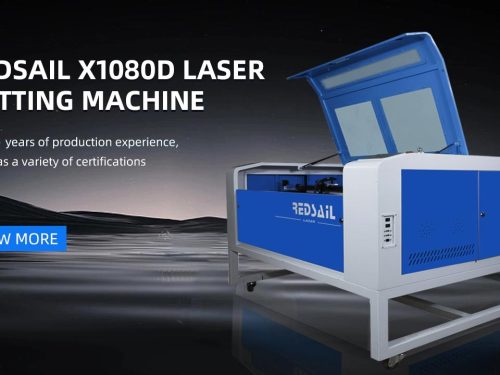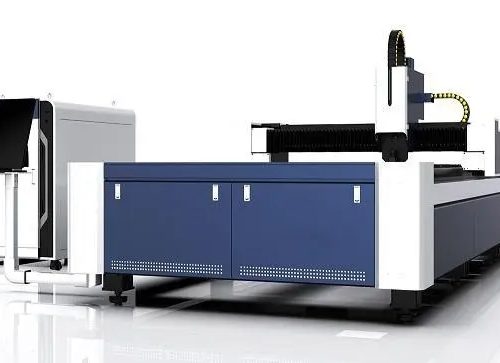
Stepping motor is a discrete motion device, which has essential connection with modern digital control technology. In the current domestic digital control system, the stepper motor is widely used.
With the emergence of servo motors, servo motors are also increasingly used in digital control systems. In order to adapt to the development trend of digital control, stepper motor or servo motor are mostly used as executive motor in motion control system. Although they are similar in control mode (pulse train and direction signal), there are great differences in use performance and application occasions.
Some customers will ask about the drive system of the equipment when purchasing the laser cutting machine. There are two types of motors used on the laser gantry cutting machine: stepper motor and servo motor. For the laser cutting machine, the power of the stepper motor can meet the transmission requirements of the laser cutting machine, so what are the differences, advantages and disadvantages and practicality of the two?
At present, the transmission of laser cutting machine is mainly divided into imported and domestic! Whether the servo motor is good or the stepper motor is good is the concern of many users who buy cutting machines! According to different user groups and needs, servo and stepper have their own advantages. Next, Xinquanli Laser will explain the differences between the two motors for a simple analysis:
1、 Performance comparison between stepper motor and servo motor
Stepping motor is a discrete motion device, which has essential connection with modern digital control technology. In the current domestic digital control system, the stepper motor is widely used. With the emergence of full digital AC servo system, servo motors are also increasingly used in digital control systems. In order to adapt to the development trend of digital control, stepper motor or full digital servo motor are mostly used as the executive motor in motion control system. Although they are similar in control mode (pulse train and direction signal), there are great differences in use performance and application occasions. Now compare the performance of the two.
2、 The control accuracy of the two is different
The step angle of two-phase hybrid stepping motor is generally 3.6 ° and 1.8 °, and that of five-phase hybrid stepping motor is generally 0.72 ° and 0.36 °. There are also some high-performance stepping motors with smaller step angle. For example, a stepping motor used for the slow-wheel machine tool produced by Stone Company has a step angle of 0.09 °; The step angle of the three-phase hybrid stepping motor produced by BERGER LAHR can be set to 1.8 °, 0.9 °, 0.72 °, 0.36 °, 0.18 °, 0.09 °, 0.072 ° and 0.036 ° through the dial switch, which is compatible with the step angle of the two-phase and five-phase hybrid stepping motor.
The control accuracy of the servo motor is guaranteed by the rotary encoder at the rear end of the motor shaft. Taking Panasonic all-digital servo motor as an example, for the motor with standard 2500 line encoder, the pulse equivalent is 360 °/1000=0.036 ° due to the use of quadruple frequency technology inside the driver. For the motor with a 17-bit encoder, the driver receives 217=131072 pulses and the motor rotates once, that is, its pulse equivalent is 360 °/131072=9.89 seconds. Is 1/655 of the pulse equivalent of the stepping motor with a step angle of 1.8 °.
3、 Different low-frequency characteristics
The stepper motor is prone to low-frequency vibration at low speed. The vibration frequency is related to the load condition and the performance of the driver. It is generally considered that the vibration frequency is half of the no-load take-off frequency of the motor. This low-frequency vibration phenomenon determined by the working principle of the stepping motor is very unfavorable to the normal operation of the machine. When the stepper motor works at low speed, damping technology should generally be used to overcome the low-frequency vibration phenomenon, such as adding damper on the motor or adopting subdivision technology on the driver.
The servo motor runs very smoothly, and it will not vibrate even at low speed. The AC servo system has the resonance suppression function, which can cover the mechanical rigidity deficiency, and the system has the frequency analysis function (FFT) inside, which can detect the mechanical resonance point for the system adjustment.
4、 Different operation performance
The stepper motor is controlled by open-loop control. If the starting frequency is too high or the load is too large, it is easy to lose the step or lock the rotor. If the speed is too high when stopping, it is easy to overshoot. Therefore, in order to ensure its control accuracy, the problem of raising and lowering the speed should be properly handled.
The AC servo drive system is closed loop control. The driver can directly sample the feedback signal of the motor encoder. The internal structure is a position loop and a speed loop. Generally, there is no step loss or overshoot of the stepping motor, and the control performance is more reliable.
5、 Different speed response performance
It takes 200~400 milliseconds for the stepper motor to accelerate from standstill to working speed (usually hundreds of revolutions per minute). The acceleration performance of AC servo system is good. Taking Panasonic MSMA 400W servo motor as an example, it only takes a few milliseconds to accelerate from static to its rated speed of 3000RPM, which can be used in control situations requiring fast start and stop.
6、 Different torque-frequency characteristics
The output torque of the stepping motor decreases with the increase of the speed, and will drop sharply at higher speed, so its working speed is generally 300~600RPM. The servo motor is constant torque output, that is, it can output rated torque within its rated speed (generally 2000RPM or 3000RPM), and constant power output above the rated speed.
7、 Different overload capacity
Stepper motors generally do not have overload capacity. Servo motor has strong overload capacity. Taking Panasonic AC servo system as an example, it has the ability of speed overload and torque overload. Its torque is three times the rated torque, which can be used to overcome the inertia moment of inertia load at the moment of starting. Because the stepping motor has no such overload capacity, in order to overcome this inertia torque, it is often necessary to select a motor with a larger torque when selecting the type, and the machine does not need such a large torque during normal operation, which leads to the phenomenon of torque waste.
To sum up, the servo motor system is superior to the stepping motor in many aspects of performance. But in some places where the requirements are not high, the stepping motor is often used as the executive motor. Therefore, in the design process of the control system, control requirements, costs and other factors should be comprehensively considered, and appropriate control motors should be selected.










